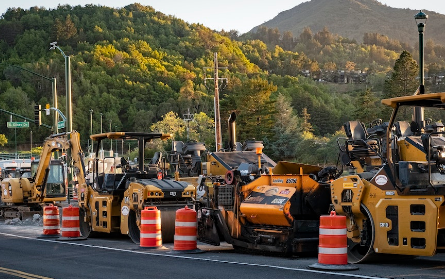
What’s New in Mechanic’s Lien & Bond Claim Law?
There have been some key developments and changes to mechanic’s lien and bond claim laws throughout the U.S. Notably, changes to retainage in Illinois and Minnesota, new Notice of Nonpayment form in Florida, and bond claim deadline changes in Oklahoma.
Mechanic’s Lien & Bond Claim Law | What’s New Illinois?
Illinois SB1636 restricts the amount of retainage that can be held on a private construction project. A construction contract may provide for withholding up to 10% of any payment made prior to completion of 50% of the contract. When a contract is 50% complete, no more than 5% of the amount of any subsequent payments made under the contract may be held as retainage.
In Illinois Imposes Retainage Limits in Construction Contracts, author Gregory S. Gistenson states “Retainage limits have been introduced in one form or another in every session of the Illinois General Assembly dating back to at least 2005.” WOW!
What else is new? Illinois SB0104 amends the State Prompt Payment Act and requires that contractors pay each subcontractor and material supplier, or provide written notice of refusal to pay, within a set time period after receiving payment from the state or agency. The legislation provides a penalty for a contractor’s failure to pay in accordance with statute. Further, on or before July 2021, the Department of Transportation shall publish on its website a searchable database that allows for queries by the name of a subcontractor or the pay item such that each pay item is associated with either the prime contractor or a subcontractor.
Mechanic’s Lien & Bond Claim Law | What’s New Minnesota?
HF2 requires that project owners and public entities release retainage no later than 60 days after substantial completion, and that unless there is a dispute, contractors must pay all remaining retainage to their subcontractors no later than 10 days after receiving payment from the owner/public entity. After substantial completion, the owner/public entity may withhold no more than 250% of the cost to correct or complete work known at the time of substantial completion.
Mechanic’s Lien & Bond Claim Law | What’s New Florida?
Florida’s new Notice of Nonpayment! Effective 10-1-19 HB1247 provides a newly prescribed form for a Notice of Nonpayment (bond claim), for both private and public projects. The legislation requires a Notice of Nonpayment to be under oath and the claim must include additional information, where applicable, stating the portion of the claimed amount being held for retainage, previous payments made and the value of future furnishings to be made.
The legislation also clarifies that negligent inclusion or omission of any information in the Notice of Nonpayment that has not prejudiced the contractor or surety does not defeat an otherwise valid claim. However, willfully exaggerating the amount unpaid or willfully including a claim for work not performed or materials not furnished is fraudulent.
When providing rental equipment, the Notice of Nonpayment must be served no later than 90 days after the date the rental equipment was on the job site and available for use.
Mechanic’s Lien & Bond Claim Law | What’s New Oklahoma?
Rounding out our changes is Oklahoma. Effective 11-1-19, HB2305 adjusts the time frames for filing an action against a payment bond. When contracting with a subcontractor, a bond claim must be made within 90 days from last furnishing materials or services. If contracting with the prime contractor, a bond claim is optional. Under HB2305, suit to enforce a claim under the bond must be made within 1 year from last furnishing materials or services; however, the deadline for suit will be extended to 2 years from last furnishing materials or services if a claim was made against the bond within 1 year from last furnishing materials or services.






